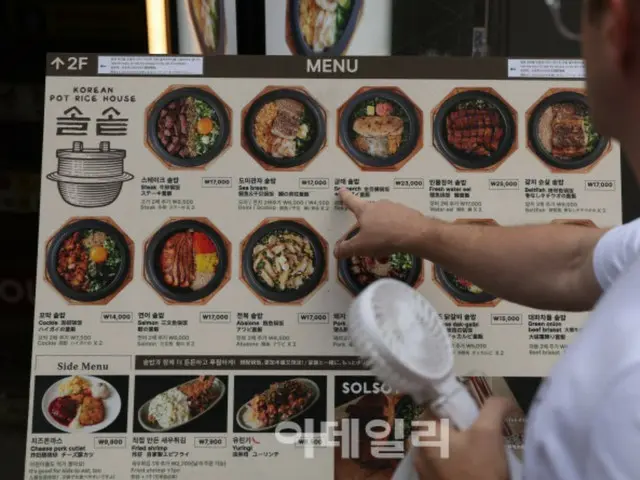Since President Moon said, "The price of food is about 211 won (about 211 yen)," food price stabilization has been one of the top priorities of the new administration, but the rise in perceived prices is expected to continue.
This is because food and beverage prices have risen sharply, and even agricultural products, which had previously shown a stable trend, are showing signs of price increases.
According to a survey titled "Price Level Statistics Taking Purchasing Power Value (PPP) into Account" by the OECD on the 15th, the price level of food and beverages in Korea is
As of 2023, it will be 147, 47% higher than the OECD average of 100. The price level taking into account PPP is adjusted according to the economic size and exchange rate according to purchasing power, and is the price level felt by the people of each country.
The price level of food and beverages in Korea is the second highest after Switzerland (163), a representative high-price country, and is higher than the United States (94) and other countries with larger economies than Korea.
It was higher than Japan (126), the UK (89), and Germany (107). Korea's clothing and footwear prices (137) and education prices (110) were also above average.
Final consumption prices (85) were lower than the average. Although the overall price level is below the average, the prices of basic items such as food and clothing are relatively high.
According to Statistics Korea, the food price index for the first quarter of this year was 125.04, exceeding the consumer price index (116.30).
Prices of some agricultural products, which had been relatively stable, have soared, raising concerns that they could stimulate prices again.
This is because the extremely hot weather is expected to cause price instability in agricultural products. In particular, the price of Chinese cabbage is expected to soar during the summer, and according to the Rural Economic Research Institute,
The area of land cultivated with Chinese cabbage this summer is expected to decrease by 8.8% compared to last year. The production volume of Chinese cabbage in summer is smaller than in other seasons, so if there is a shortage, the price may rise significantly.
Another factor behind the decline in production is the expected extreme heat. If the price of Chinese cabbage rises sharply in the summer, it could continue through the kimchi-making season and could lead to an increase in the prices of food products overall.
The South Korean government has begun formulating measures to stabilize food prices and restaurant prices. It plans to devise price stabilization measures for each sector, including agricultural, livestock, and fishery products and processed foods.
While the government is investigating the matter, it is also expected that it will step up its calls for price stabilization for the food industry. Experts have advised that long-term market conditions need to be improved.
"Processed foods are subject to external factors, so it is not easy to resolve the issue with short-term measures alone," said Kim Dae-jeong, a professor at the University of Illinois' School of Business.
Companies must improve their cost structures."
2025/06/16 07:08 KST
Copyrights(C) Edaily wowkorea.jp 107

